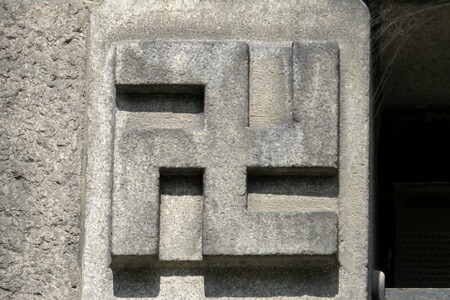I travelled to Copenhagen, Denmark recently. On one side of the Ny Carlsberg Glyptotek museum is a park. The entrance to the park has swastikas embedded in the metal gate posts.
 (Google Streetview Reference 1.)
(Google Streetview Reference 1.)
Also, on the side this brick building embedded with the bricks or granite stonework (I cannot precisely remember) are more swastikas.
 (Google Streetview reference 2.)
(Google Streetview reference 2.)
What is the meaning or history behind these swastikas in this complex?
So that my intent is clear, I realise:
- Europe has a complicated history with swastikas from the era of the German National Socialist Party.
- Swastikas have different meanings given their angle / tilt / mirror.




